It was a day off today. I spent most of the day in the office catching up with admin, but had to pop out in the afternoon to drop in some paperwork at my friendly local optics retailer, Cley Spy (other optics retailers are available!). As I then found myself up near the coast with a couple of hours before sunset, I decided to have a quick walk out along the seawall at Blakeney.
The tide was just starting to come in, so the waders were mostly distant and there was nothing of note in the harbour channel. When I got to the bend in the seawall,the flock of seven Twite which has been coming in to drink here flew off out over the saltmarsh calling.
Before I got to the gate, I could hear the Lapland Buntings calling and looked up to see a flock of eight flying round overhead. They have a distinctive couple of calls which are often the best way of picking up a Lapland Bunting, a dry rattle ‘pt-t-t-t’ and a clipped but ringing ‘teu’, the two often interspersed. They also have a particular way of flying, often chasing each other while circling around. They have been around here on and off for several months now, but can often be hard to find, normally requiring a little time and patience to locate them.
Today it seemed like they would never land. The eight Lapland Buntings flew off way over the freshmarsh, and back again, out towards the shingle ridge, and back again, then out over the saltmarsh. They looked like they were going to land a couple of times, but each time seemed to lose their nerve and fly up and off again. I got down off the seawall and stood by the gate where I thought I would be less obvious and less likely to put them off. Finally, after 10 or more minutes in the air, they came round again and suddenly all dropped into the denser vegetation – annoying, as I had hoped they might land in the open.
I edged my way down along the fence and, scanning the ground carefully, started to see some birds in the grass. There are lots of taller dead weed stems here, which hamper visibility, but after finding a little group of Skylarks in there at first, I finally came across three Lapland Buntings. They are amazing birds to watch like this. They creep about on the ground like mice, with their heads down, so they can disappear in the shortest of grass. They can also run surprisingly quickly like this, so are hard to follow. By positioning myself carefully, I was able to see through to an area where they were feeding and get them in the scope.
 Lapland Buntings – two feeding hidden in the vegetation
Lapland Buntings – two feeding hidden in the vegetation
These would normally be classed as pretty good views of Lapland Bunting, given how secretive and skulking they can be. I spent some time watching them, creeping about in the low grass, occasionally scuttling in to deeper cover, but returning to the same slightly more open patch to feed.
 Lapland Bunting – a fairly classic view, hiding in short grass
Lapland Bunting – a fairly classic view, hiding in short grass
I had seem one of the local Barn Owls hunting over the fields beyond, and at one point it passed quite close to where the Lapland Buntings were feeding. The birds froze and flattened themselves to the ground at first, then started to look up and seemed like they might take off. The Barn Owl drifted off again.
 Barn Owl – hunting out over the grazing marshes
Barn Owl – hunting out over the grazing marshes
The Barn Owl was doing a circuit of the fields and the next time it came even closer. This time the Lapland Buntings were not going to hang around and suddenly burst into the air calling. As I was standing the opposite side of them to the Barn Owl, they flew past me with a couple of metres, calling. There were now ten Lapland Buntings in the flock, perhaps the other two had already been on the ground with the Skylarks when the eight I had been watching flew in. They headed out towards the seawall, before circling back round, at one point flying low over the hunting Barn Owl as if to take a closer look at the apparent threat from above.
I had expected the Lapland Buntings to disappear off at this point, but they circled back round to where they had been feeding and came into land. But rather than land in the thick vegetation again, they flew straight towards me and started to land on the fence right next to me. Amazing!
 Lapland Bunting – some of them landed on the fence
Lapland Bunting – some of them landed on the fence
Some of the other Lapland Buntings dropped down onto the path in front of me, and the birds dropped down one by one from the fence to join them. They were still nervous of the threat and the ones on the path stayed frozen to the spot, looking round, ready to take off again. Amazingly, given how close they were to me, they were not startled again as I slowly turned my scope onto them. Point blank views out in the open of Lapland Buntings is not something you can enjoy very often!
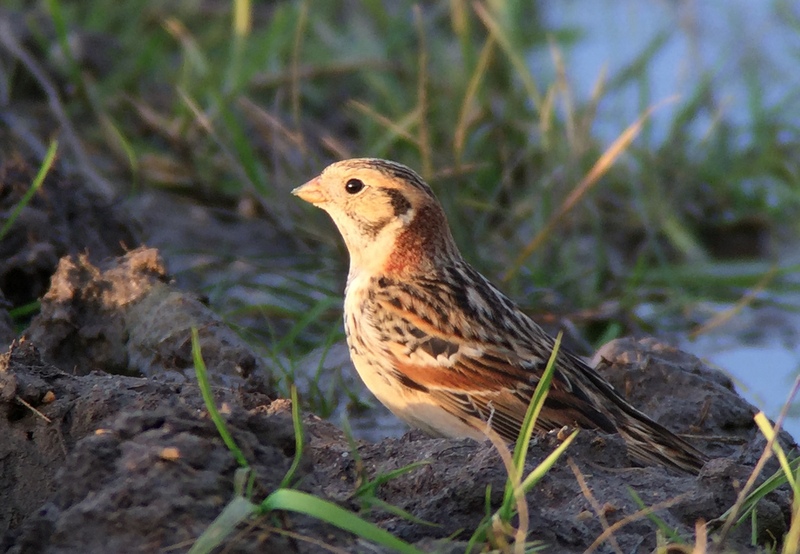
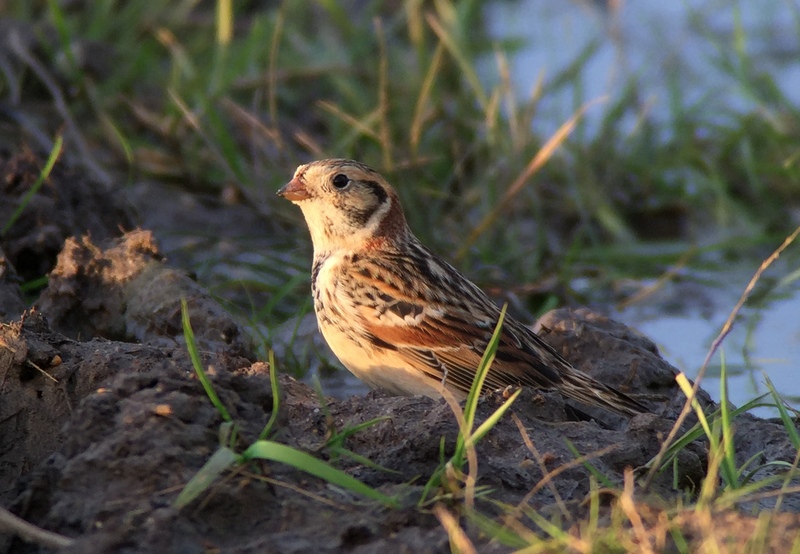 Lapland Bunting – perched out on the path or several minutes
Lapland Bunting – perched out on the path or several minutes
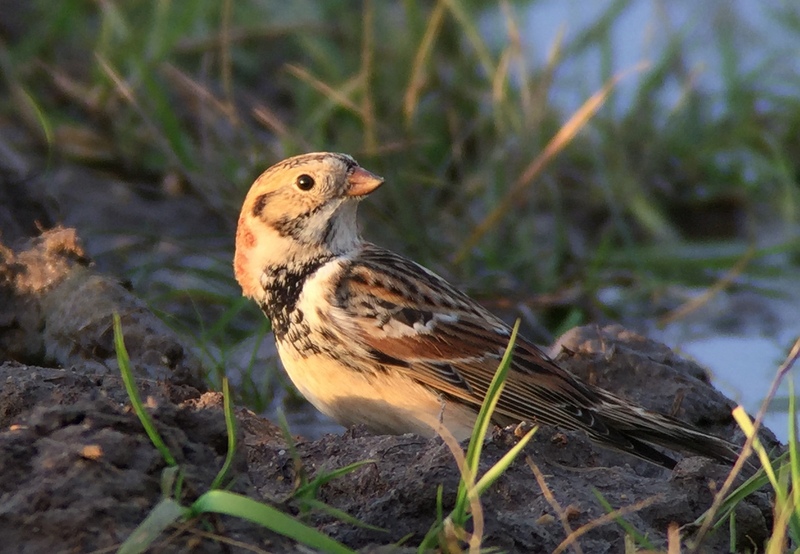 Lapland Bunting – looking round nervously
Lapland Bunting – looking round nervously
 Lapland Bunting – this male showing off its rusty nape
Lapland Bunting – this male showing off its rusty nape
As they relaxed, the Lapland Buntings all shuffled into the grass. But rather than disappear back in deep, they started to feed right on the open edge by the base of the fence, right in front of me. There were at least six of them there, possibly more, although the others may have dropped in further back.
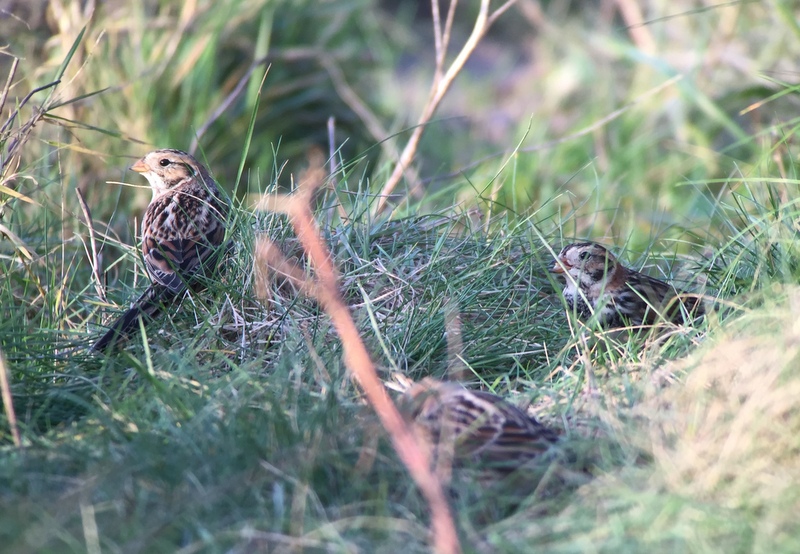 Lapland Buntings – started feeding in the grass in front of me
Lapland Buntings – started feeding in the grass in front of me
It was a real treat to be able to watch them like this. Some were preening, while others started to pull seeds from the grass and weeds. There was quite a bit of interaction between them. As in flight, they would occasionally chase each other through the grass.
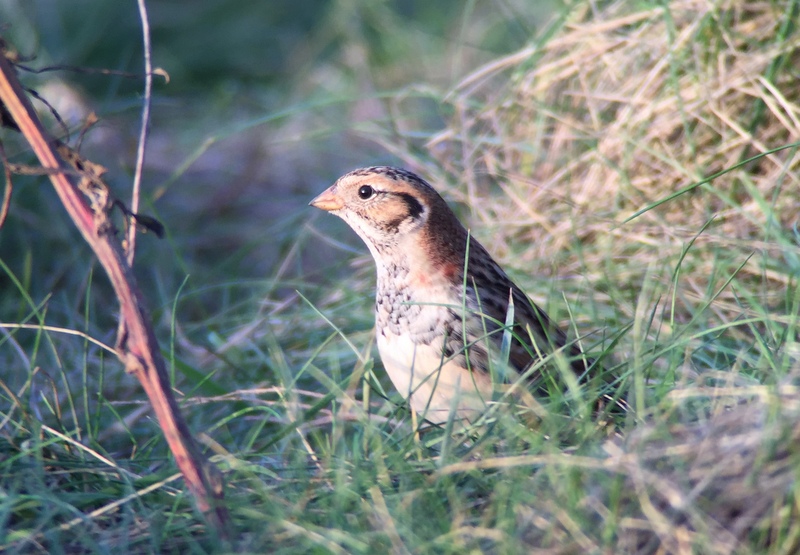 Lapland Bunting – another male with black speckled breast
Lapland Bunting – another male with black speckled breast
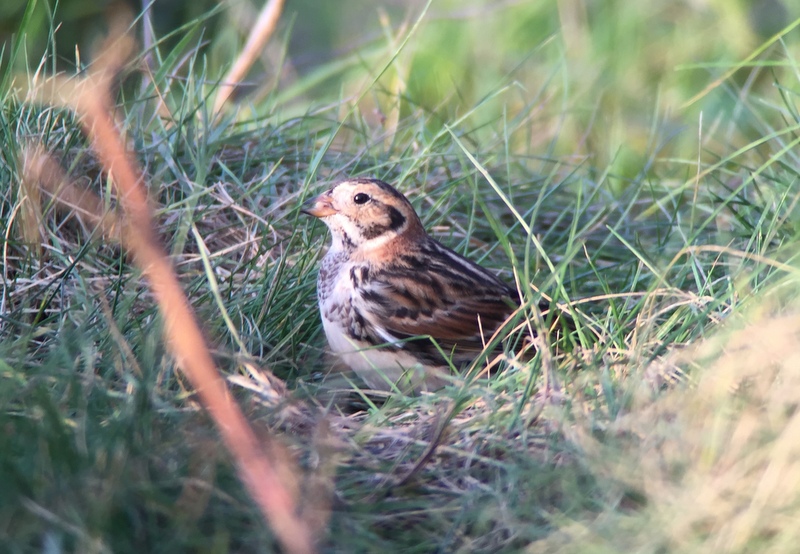 Lapland Bunting – settled down in the grass to feed
Lapland Bunting – settled down in the grass to feed
It was also great to be able to look closely at the differences between them. Lapland Buntings can be hard to age and sex through the winter, but there were some obvious males with bright rusty napes and more solid black markings on the underparts. Other birds were more obviously streaked below and with less obvious and more broken colour on their napes.
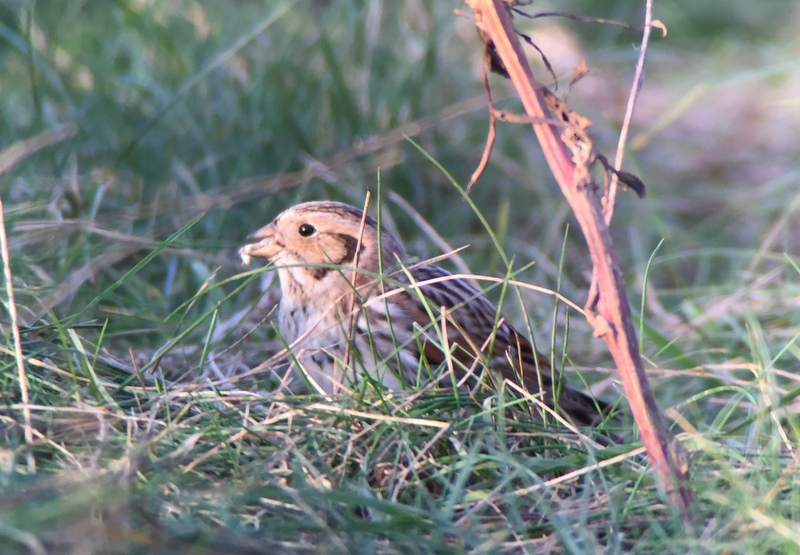 Lapland Bunting – a less well-marked bird, presumably female
Lapland Bunting – a less well-marked bird, presumably female
After snapping away a few photos, I turned the camera to video and left it to capture some of the action, while I marvelled at the birds through my binoculars. Some video of the Lapland Buntings is linked below:
I had the Lapland Buntings to myself for around 20 minutes, feeding in the grass right in front of me. The late afternoon sunlight, shining through low beneath the clouds, lit them up beautifully. It was a magical few minutes, a real privilege. Eventually, for no apparent reason, they were off again, flying round calling, and off over the freshes.
Lapland Buntings are scarce winter visitors here most years. They breed up on the Arctic tundra, from Scandinavia eastwards through Russia, and also in North America. The majority of the European population winters on the steppes of SE Europe, but small numbers can generally be found along the east coast of the UK. Norfolk is a good place to look for them, but they can be hard to find in some years.
There is still time to come and enjoy some of the lingering delights of winter birding in Norfolk, if you are interested in seeing birds like our Lapland Buntings. Otherwise, spring is now not far away and undoubtedly more exciting moments lie in store. If you would like to join us, please get in touch.
Marcus Nash – The Bird ID Company
















